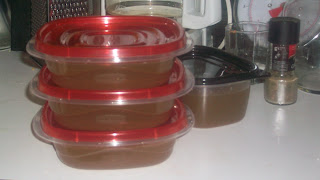- 3 cups of flour
- 1/4 sugar
- Baking powder
- 1 egg
- Milk
- ½ stick of margarine or butter
- About a cup of raisins/crasins (personal favorite)/chocolate chips
Set oven to 350 degrees
Mix 3 cups of flour, a ¼ cup of sugar and a heaping teaspoon of baking powder with a colander.
Cut up a little less than half a stick of margarine and crush up into mixture.
In a measuring cup crack an egg and whisk it with a fork. Then add milk until you have a little more than a cup but no more than a 1 ¼ cups. Whisk this mixture.
Make a divot it the center of the dry mixture and add the egg and milk.
Mix the dough in a clockwise motion until everything is totally mixed and the dough comes off the sides of the bowl into one clump in the center.
Place cookie sheet in the oven to heat.
Spread flour on the counter or cutting board, dump the dough out of the bowl, and sprinkle more flour on top. Kneed the dough by taking the outer edges and folding them into the center.
Once you have does this 6 or 7 times the bottom of the dough should be flat against the work space. Flip the dough over and press it down to create a rectangle ½ inch thick.
Cut circles into the dough using a cookie cutter or the rim of a glass. Take the sheet out of the oven and melt butter or margarine on the sheet. Place the scones on the sheet (they don’t usually expand out, but try to leave at least 1 inch between scones.)
Scones are cooked in 20 min., however depending on your oven, you may want to flip them over in 15 min. and cook the top side down for 5min.
Now for my second Irish recipe. In my house we had lamb stew instead of corned beef and cabbage which I don't think I've ever had. Anyway this is a really good recipe and I don't have a ton to say about it except: you're welcome.
Thyme and Vegetable Lamb Stew
- 1 pound(s) lean leg of lamb, stew meat, trimmed, cut into 1-inch pieces
- 4 cup(s) fat-free chicken broth, reduced-sodium
- 2 1/2 medium leek(s), or 2 large, white and pale green parts only, sliced
- 2 medium stalk(s) celery, thinly sliced
- 2 medium carrot(s), thinly sliced
- 2 tsp dried thyme
- 1 tsp table salt
- 1/2 tsp black pepper, freshly ground
- 1 medium potato(es), baking-variety, peeled
- Bring a large saucepan of water to a boil over high heat. Add lamb and cook 10 minutes; drain and set lamb aside.
Pour broth in same saucepan; bring to a boil over high heat. Add leeks*, celery and carrots; reduce heat and simmer, covered, 10 minutes.
Return lamb to saucepan; add thyme, salt and pepper. Simmer, covered, until lamb is very tender, about 45 minutes.
Grate potato into stew, using small holes of a box grater. Stir well and reduce heat to lowest possible simmer. Cook, uncovered, stirring frequently, until thickened, about 10 minutes.
- *Leeks: so apparently leeks are pretty dirty inside (hahaha...lol.) You need to cut them length wise and pull the layers apart in a bowl of water to get the sand (?) out, before you slice them.
























